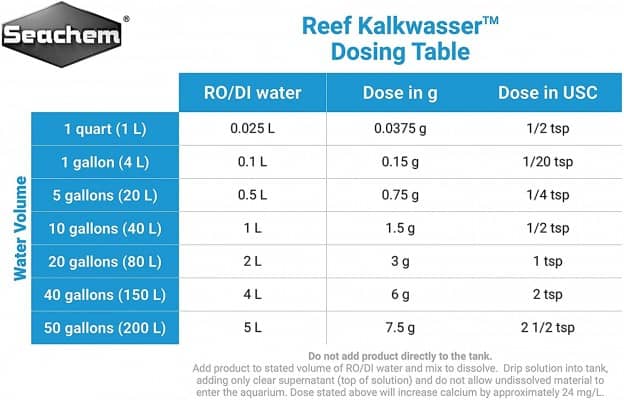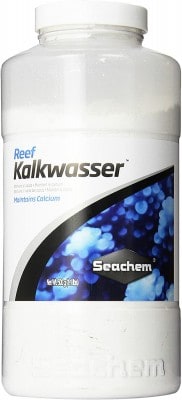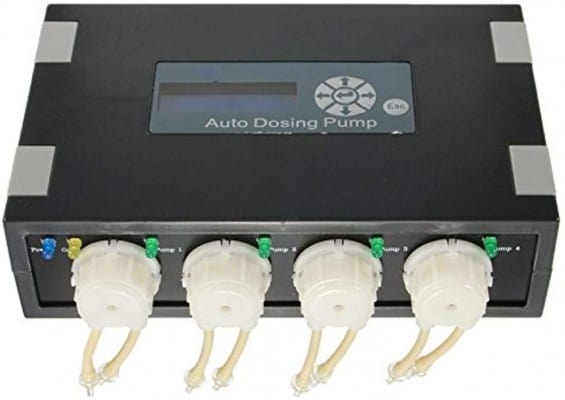Kalkwassar is basically Calcium Hydroxide in the German language. It is an additive for reef tanks and is not much costly compared to others. It helps you raise the levels of pH and calcium in your reef tank. For beginner and intermediate hobbyists, it is a simple and economical way to maintain the alkalinity and calcium levels. But, what is the procedure to dose Kalkwasser in a reef tank?
The process of dosing kalkwasser is not much complex. You have to test the pH, alkalinity, and calcium levels first. Then, you’ll go for dosing the kalkwasser in the water and then wait for some time to check if the levels have been raised according to your target.
However, if you still need to learn about the process in a much detailed manner, I’d suggest you take some time and read the full article.
Why Do I Need To Keep The Levels Of Calcium High In My Reef Tank?
Because your tank inhabitants – corals, fish, snails, clams, crabs – all of them need calcium in order to strengthen their shells or skeletons. This was not any problem when they were in the wild since there is an abundant supply of calcium dissolved in the ocean. But when you introduce them to a closed environment, they will need to use up the dissolved calcium from the tank water, and so the calcium reduces over time.
You can try changing 20-25% of the water, but it will not be enough. The chances are that your tank will outgrow them alone and soon you will have to supplement the water with kalkwasser.
Which Equipment Will I Need During The Process?
Here’s one good thing about kalkwasser dosing. It does not require you to have fancy and expensive equipment. You will simply need a clean container made of plastic (it can be a used one), a long air tube that will reach the sump from the tank’s top, and a turkey baster which will help you run the siphon.
However, if you are willing to use better equipment, either buy an air tube restrictor or a drip acclimator for slowing the water flow down to dripping. It works better than the knot trick.
A dosing pump is another tool that is also useful. It will drip the water slowly, allowing you to even leave the jug on the floor. You will not have to use a siphon if you use this dosing pump.
The next part of the article will discuss how to dose kalkwasser in a reef tank using those simple equipment.
Additional Read: Reef Tank Dosing Guide
How Do I Dose Kalkwasser?
Here goes the process with each of the steps to help you understand it better. (You are welcome!)

Step 1: Since the goal is to increase the calcium, alkalinity, and pH levels of the tank water, you have to test their current levels before you dose kalkwasser in your tank.
Step 2: Take a gallon of water now. It has to be fresh water. Then, take a half spoon of kalkwasser and mix it with the water as vigorously as you can.
It is better if you take a water jug or a 1-gallon jug, maybe a water jug or a milk jug. Then, keep shaking it, leaving the cap of the jug on. Shake it vigorously, so the kalkwasser gets dissolved in the water.
Step 3: Now, take an air tube and get it into the bottom of the kalkwasser jug.
Step 4: Use a siphon and a turkey baster, and get the air in the line sucked out by them. Once the kalkwasser flow starts, tie the line with a knot quickly and slow the flow down to the level of dripping. And please, do not use your mouth to start the water flow. (Sorry but you need to know this!)
Step 5: Put the air tube in the sump of your reef tank. Leave it like that and wait for at least 2 hours.
Step 6: Check the levels of pH, calcium, and alkalinity again after 2 hours or so. If you see that the calcium levels have not reached your desired level yet (more than 400 ppm), you can dose kalkwasser again when you top off the evaporated water next time. Remember to mix one teaspoon of kalkwasser with a gallon of R/O water or freshwater.
If you see that your tank water needs even more calcium after the 2nd time, add an extra half teaspoon of calcium hydroxide. You can use two teaspoons at most.
Is There Any Alternative Way To Do This?
Yes, there is. The alternative way of dosing kalkwasser is using a kalkwasser reactor. Here is how it works:
Lime (CaCO3) is the fundamental element for a kalkwasser reactor. You can use crushed seashells for this purpose. Do not use crushed corals because they release phosphates throughout the process.
As lime does not dissolve when the pH level is high, you have to make sure that the pH level is below 7. You can do this by putting CO2 in the reactor. It will lower the level of pH and keep it within the optimum range.
Now, when you add lime to the water, it will dissolve and create calcium-hydrogen-carbonate which will have the same effects on the water as kalkwasser has.
Remember that you do not need to add kalkwasser to the water while using a reactor. It will create a counter-productive effect if you do so. They do not mix well with each other.
The reactor can control the output created by hydrogen and calcium ions. But if you add kalkwasser at the same time, it will create so much calcium that the water will soon be calcified and look cloudy. So, you have to use one of these two methods for kalkwasser dosing.
Suggestions You Should Follow During The Process
Keep each of the following suggestions in your mind while you are dosing kalkwasser in your reef tank. They’ll help you do it right at your first attempt without any unwanted incident.
- Don’t overdo the mixing of kalkwasser. It may make the liquid solution less powerful.
- While you are dosing the kalkwasser, monitor the pH level if it is above 0.2, dose a little slower.
- Remember not to overdose. It is better and safer to dose less than to overdose.
- If there is a sump system in your reef tank, try to run the dosing process there. It will help you avoid damaging and irritating your tank inhabitants.
But if there isn’t any sump, you should start the process with a really low kalkwasser dose and add it from the tank corner where it is the farthest from your corals. Do the same if you have a sump and there is any livestock in it.
Additional Read: How oftern to dose calcium in reef tank
Where Can I Find Kalkwasser?
You can find kalkwasser at any local fish store. You can also order it online from here.
What If Just Kalkwasser Is Not Enough?
Suppose you see that your tank inhabitants are using up the calcium so quickly that you cannot keep up with the pace by mixing 2 spoons of kalkwasser for each water gallon (top-off). In that case, you have to go for another product – calcium-alkalinity additive (2 part).
In a situation where kalkwasser is not enough, this additive will definitely be your savior.
Final Words
That is all about the dosing process. It requires little time and effort to keep the calcium levels stable in your reef tank.
Just follow the steps and remember the suggestions. This will get you a tank full of healthy sea animals. Good luck with kalkwasser dosing!


